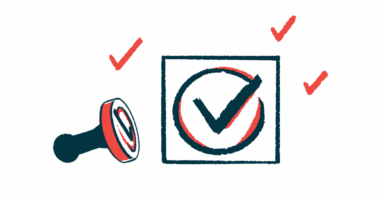How Meditation Helped Me Manage Anxiety

For most of my life, I’ve been wary of meditation, which involves various mind exercises that help to build happiness and shrink stress.
Perhaps I could blame my negative attitude about meditation on other factors, such as how it’s portrayed on TV. In reality, I never took the time to research it. It wasn’t until my journey with myasthenia gravis (MG) that I discovered how meditation could help me lower my stress and deal with my anxiety.
Like many diseases, MG involves both physical and mental ailments. In my case, weakness throughout my body was accompanied by high levels of anxiety. This anxiety wasn’t only about my current situation, my brain also was loaded with thoughts about a future I probably wouldn’t see.
I knew I needed to deal with my stress but was unsure how to do it. Distractions like video games and exercise worked for a while, until they didn’t. But after searching for other strategies and having varying levels of success with each, I still couldn’t find anything that worked long-term.
The idea of meditation popped up in my online searches every once in a while, but I didn’t take it seriously. After trying many other different things, I finally decided to give meditation a shot.
Meditation has grown in popularity in recent years, and with it, the number of websites, apps, and podcasts addressing meditation has exploded. As someone completely new to the practice, I wanted something that could guide me through the entire process. It was easier for me to use an app than try to figure meditation out on my own, so I downloaded a few to see which fit me best.
I’m an eternal cheapskate, so I deleted apps that charged a high monthly subscription fee. I wanted to deal with my anxiety, but I wasn’t willing to pay $15 a month to do it. Surely my mental health wasn’t that expensive.
Instead, I tried out two apps that offered free trials.
They worked well at first. I learned in highly structured sessions how to focus my thoughts and breathe properly. I practiced sitting still, clearing my mind, and counting my breaths. I focused on thoughts that relaxed me instead of scaring me. When anxiety about MG hit, I knew what I needed to do to calm down and focus.
But as the days went on, I had trouble keeping up with a daily meditation schedule. And like with all things I don’t immediately succeed at, I gave up.
Yet despite having trouble keeping up with meditation apps, I eventually picked it up again. This time, I looked for resources that were cheaper. After searching, I discovered guided meditations on Spotify, an audio streaming service I already paid for. I found many different playlists and podcasts about meditation, and have done a much better job sticking with it this time around.
Meditation isn’t for everyone, but I think it can really benefit those who need a way to address their stress and anger caused by having MG. It’s an acquired taste, just like coffee or kimchi. It might make you uncomfortable at first, but once you get used to it, it becomes second nature.
For me, meditation has definitely had a positive impact. Anxiety will always be a part of my life, but meditation has helped me confront it with serenity and acceptance.
***
Myasthenia Gravis News is strictly a news and information website about the disease. It does not provide medical advice, diagnosis or treatment. This content is not intended to be a substitute for professional medical advice, diagnosis, or treatment. Always seek the advice of your physician or other qualified health provider with any questions you may have regarding a medical condition. Never disregard professional medical advice or delay in seeking it because of something you have read on this website.








Leave a comment
Fill in the required fields to post. Your email address will not be published.